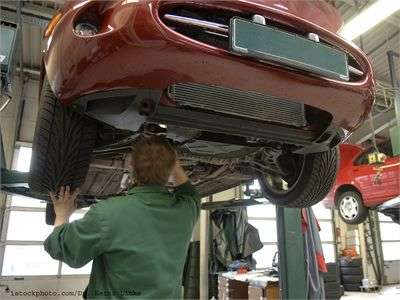Recent Articles
Popular Makes
Body Types
Electronic Brake Force Distribution

The automobile industry has dedicated millions of dollars in the last decade to developing new safety technology. Many of these millions went into improving braking technology, along with ABS systems, stability control systems and traction control systems. Electronic Brake Force Distribution is another automobile technology that aids in improving the safety of the driver and passengers. It was developed to help the brake force be better distributed between the front wheels and the back wheels as needed on the load of the vehicle. The system was designed to shorten stopping distances with particular emphasis on situations where the vehicle was carrying a heavy load. Electronic brake force distribution can automatically vary the braking force that is applied to the vehicle's brakes. This force can vary depending on road conditions, available traction, load the vehicle is carrying, and even the speed the driver is going. This system is often used in conjunction with anti-locking braking systems as they are more commonly called. When a driver of a vehicle that doesn't have electronic brake force distribution presses down on the brake pedal the force he applies is distributed evenly to all four of the wheels. If there is electronic brake force distribution installed, the brake force is proportion to each wheel as required. The electronic brake force distribution can apply the appropriate braking pressure to EACH wheel in order to maximize stopping power and help the driver to maintain steering control. In an emergency braking scenario, this system applies more brake pressure to the front wheels to stop the brakes from locking up. It the driver steers while going around a corner, the system then controls the brake force between the left and right sides to help with stability. The problem with normal braking is that if the driver has to brake heavily, it can cause the brakes to lock-up. The anti-lock braking system works at stopping this by monitoring the individual wheel speeds and then taking action in time to prevent the lock up. The action comes in the form of releasing pressure from the braking circuit when it detects extreme and rapid deceleration in any of the four wheels to make sure the driver can maintain control of the steering during panic or emergency braking. There are some disadvantages to this system though. Different amounts of braking pressure are necessary to lock a wheel that is rotating on various surfaces. Sometimes the tires are spinning on several different surfaces at the same time. An example would be if the vehicle turns a corner and one wheel is on ice and on is one snow, yet the other two are on pavement. When these wheels are all on different surfaces during an emergency stop, the ABS system would detect which of the wheels that are about to lock and would activate even though all the wheels wouldn't be about to lock. The electronic brake force distribution can detect conditions like this and will electronically control the amount of force that is applied to each wheel to brake it. This maximizes the effectiveness of the braking force. Overall, you end up with a much more effective braking process across all the various conditions. This system also has the added benefit of providing better stability when the vehicle is braking heavily as it reduces the front-end drive. As this advanced system can sense the load status of both the passengers and luggage together to optimize the rear brake force and to control front and rear brake distribution for more effective braking, you can drive with more confidence, knowing you and your passengers are safer than ever before.